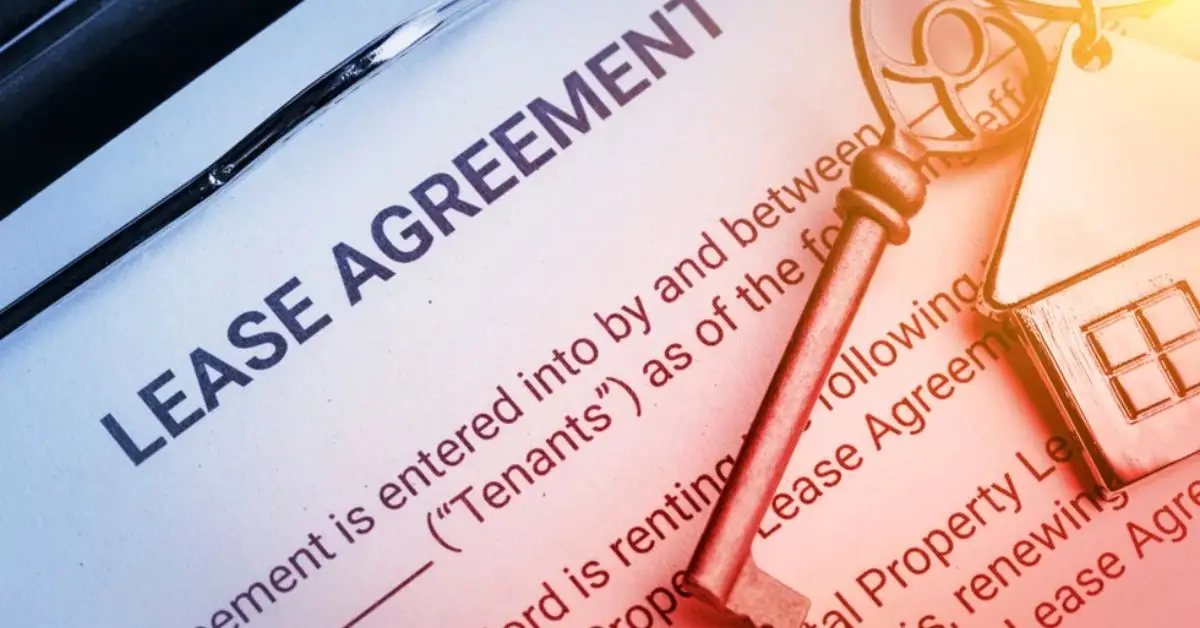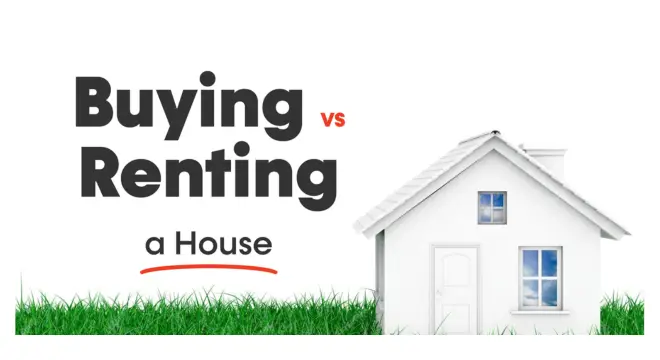How Smart Landlords Sell Their Rentals Fast (Without Agent Drama)
Selling a rental isn’t like selling your primary home. You’ve got tenants, leases, tax consequences, and timelines that don’t always play nice. And when speed matters—whether it’s to free up cash, exit a tough market, or cut your losses—you need more than generic advice.
I’ve worked with dozens of landlords who waited too long, missed market windows, or got buried in red tape trying to sell “the right way.” They followed surface-level checklists but overlooked what really matters: strategy, timing, and the kind of buyer that fits their specific situation.
This guide is different.
I’m going to walk you through 10 smart, actionable steps to help you sell your rental property fast—without getting buried in legal headaches or leaving money on the table. Whether you’ve got great tenants, bad ones, or a vacant unit, this checklist is built to help you move quickly and smartly.
So before you list anything, let’s get clear on how fast sales really work—and how landlords like you can win.
Step 1: Understand the Fast-Sale Landscape
If you’re thinking about how to sell a rental property fast, the first step is understanding what “fast” actually means in your local market—and what options exist to make that happen.
Speed isn’t just about days-on-market. It’s also about how much control you have over the timeline. Are you looking for a clean exit in 30 days? Want to offload without waiting on tenant move-outs or repairs? Those decisions shape everything from pricing to the kind of buyer you’ll attract.
In today’s market, you’ve got more tools than ever. You can sell directly to an investor, list on the MLS with an agent, auction it off, or even explore instant-offer companies (also known as iBuyers) that promise quick closings. Each has trade-offs.
For example, iBuyers like Opendoor or Offerpad often close in under two weeks—but you’ll likely give up some value for that speed. On the flip side, listing through an agent can get you top dollar, but with no guarantee on timing unless you price aggressively.
But here’s the truth: no matter how you sell, the process moves faster when you’re realistic about your pricing, upfront about the condition, and smart about targeting the right buyers.
Pro Tip: Most guides skip this, but one of the biggest time-killers is uncertainty. If you’re undecided about whether to sell with a tenant in place or wait for the lease to end, that indecision alone can stall everything. We’ll talk about that in the next step.
If you had to sell in 30 days, what would be your first move—price drop, call an agent, or go straight to an investor? Think it through. That one decision will shape everything else.
Step 2: Know Your Target Buyer & Market Conditions
One of the biggest mistakes I see landlords make is assuming any buyer will be interested in their property. The truth? Who you’re selling to makes all the difference—especially when you’re trying to move fast.

If your unit has a solid tenant and steady rent history, you’re not just selling a house—you’re selling cash flow. That means your ideal buyer might not be a first-time homeowner or a young couple. It’s probably an investor. And investors look at properties very differently.
They’ll want to know:
- What’s the current rent?
- Is the tenant in good standing?
- How long is the lease?
- What’s the cap rate or ROI?
This is where most listings fall flat. I’ve seen landlords leave out rent details, bury tenant info, or use generic marketing language that doesn’t speak to investors at all. If you’re hoping to sell quickly, you have to market directly to your likely buyer type—don’t expect them to “figure it out.”
But if your rental is vacant or needs work, the equation changes. Now you’re likely targeting owner-occupants or flippers—people who want a clean slate or a value deal. In that case, the pitch shifts: emphasize the potential, not the tenant history. And with first-time homebuyers slowing down while the rental market continues to thrive, it’s even more crucial to know who your real buyer is—see why rental demand is outpacing buyer interest right now.
Either way, the smart move is to align your pricing, marketing, and expectations with what your buyer type cares about most.
Pro Tip: Before listing, check local comps for investor-owned properties vs. regular homes. Sites like Roofstock and Mynd are great for this. You’ll quickly see that investor pricing isn’t just about square footage—it’s about return.
Who’s more likely to buy your rental—an investor looking for income or a homeowner looking to move in? The answer should shape everything from your price to your photos. Be honest about it.
Step 3: Legal & Tenant Prep
Before you think about showings, pricing, or even photos, you need to get clear on your legal position. Tenants don’t just vanish when you decide to sell. And mishandling this step? It’s the fastest way to stall your sale—or worse, end up in legal trouble.

3.1 Review Lease Terms & Local Laws
Start with your lease. Is it month-to-month, or is the tenant locked in for another 8 months? Some landlords assume they can just sell and “pass on” the tenant. That’s true in theory—but buyers may not want that obligation, especially if the rent is below market or the tenant’s history is spotty.
Also, every state has different laws about notice periods for showings, required disclosures, and tenant protections. In California, for example, you have to give 24-hour written notice before entering—even for a showing. In New York, tenants can refuse showings entirely unless it’s court-ordered.
You can’t sell fast if you don’t know what rights your tenant has. And trust me, buyers will ask.
3.2 Notify & Incentivize Tenants (Yes, It Works)
Once you’ve reviewed the lease, it’s time to talk to your tenant—directly and clearly. If they’re on a long lease and you’re selling to an investor, great. Position it as a win-win. But if the property needs to be vacant or you’re unsure what the buyer will want, you’ll need their cooperation.
That’s where incentives come in. This isn’t bribery—it’s smart business. Offer a rent discount during the listing period, or even a cash bonus if they help keep the place clean and allow showings. A little goodwill goes a long way.
Redfin and HomeLight both note that sellers often offer $250–$1,000 as move-out bonuses or cleaning support. It may sound like a lot, but it’s pennies compared to the cost of a delayed sale or an angry tenant sabotaging showings.
And if you need the tenant out before the sale? Check if your state allows you to issue a formal notice to vacate for “owner-occupancy” or sale-related reasons. Just don’t assume you can force it—many rent-control areas have tight restrictions.
Pro Tip: Create a written tenant plan before you list—lease summary, tenant contact, and a simple agreement for showings. You’ll be ahead of 90% of sellers.
What’s your lease situation right now—and does your sale plan match it? If not, it’s time to rethink either the timeline or your buyer target.
Step 4: Price Strategically for Speed
If speed is your goal, pricing isn’t just a numbers game—it’s a positioning decision. You’re not pricing to squeeze out every last dollar. You’re pricing to get the right kind of attention fast.
Here’s what that looks like in practice:
First, forget “Zillow value” or what you think your rental is worth. Look at real comps—but filter for condition, tenant status, and buyer type. If your property is tenant-occupied and needs cosmetic work, don’t compare it to a freshly renovated, owner-occupied home across the street. That’s not apples to apples.
Instead, pull sold listings for tenant-occupied properties, investor flips, or even cash-only sales. These will show you what kind of discount buyers expect when they’re inheriting a tenant or buying as-is.
Now ask yourself: do you want to price to negotiate, or price to create urgency?
If you list at market value, expect offers to come in lower, with more contingencies. If you list just below market—say 2% to 5%—you increase the chances of multiple offers, especially from investors who move quickly.
That pricing strategy alone can shave weeks off your timeline. I’ve seen landlords sell in 11 days in slow markets just by adjusting price-to-value based on buyer type.
Another factor most landlords miss? Cap rate marketing. Investors don’t care about “dream kitchens.” They care about return. If your rental nets $1,800/month and you price it at $240,000, that’s a 9% gross yield. Mention that. Make it easy for investors to do the math.
Pro Tip: If your tenant is paying under-market rent, highlight it as “future upside.” Some buyers see low rent as an opportunity, not a flaw—especially if the lease is expiring soon.
Would you rather price high and wait, or price smart and close in under 30 days? That decision defines your next 10 steps—choose it intentionally.
Step 5: Optimize Property Presentation
Let’s be honest—rentals don’t usually photograph well. Whether it’s cluttered, partially furnished, or just “lived-in,” it rarely feels like the kind of place buyers get emotionally attached to. But that doesn’t mean you can’t make it stand out.

Fast sales depend on one thing: first impressions. And these days, that first impression happens online, often within 7 seconds of someone scrolling past your listing.
5.1 Handle Repairs, Even the Small Stuff
If something’s broken—fix it. No buyer wants to inherit your “renter wear and tear.” Things like dripping faucets, stained ceilings, missing outlet covers, or torn screens are red flags that make buyers wonder what else has been neglected.
You don’t have to do a full renovation. But a quick refresh—like neutral paint, new light fixtures, or deep-cleaning carpets—can make a tired unit feel move-in ready, even if it’s not perfect. Even if your budget is tight, you can still boost appeal—these zero-cost home fixes can make a big impact with buyers.
If the unit is occupied, coordinate with the tenant to knock out small repairs over one or two scheduled days. Offer them a rent discount for the hassle. It’s worth it.
5.2 Stage What You Can, Declutter What You Must
If the unit’s vacant, lightly stage key rooms (living, dining, and main bedroom). You don’t need a design firm. A rented couch, a rug, and a few lamps go a long way.
But if it’s tenant-occupied, staging isn’t always an option. In that case, declutter aggressively. Ask the tenant to remove laundry, dishes, and personal items before showings. Provide moving boxes if needed. I’ve even had clients pay for a small storage unit just to make space.
Pro Tip: One quirky but effective trick? Cut a lemon in half and microwave it for 20 seconds before a showing. It smells clean, not artificial. Stagers and brokers actually do this.
5.3 Use Pro Photos and (If Possible) Virtual Tours
This isn’t optional. Listings with professional photos sell 32% faster and can add $3,000–$11,000 in perceived value, according to Redfin.
Even if you’re not doing a full video walkthrough, get high-res, well-lit photos. Capture angles that show space—not just features. If your tenant is uncomfortable with filming, do it before listing or offer an incentive.
Virtual tours are especially useful if you’re targeting out-of-state investors. They let people “walk the space” without booking a showing.
Look at your current unit with buyer eyes. Would you feel confident buying it fast? If not, what would change your mind in 20 minutes or less? Start there.
Step 6: Choose the Right Selling Method
You’ve got more options to sell a rental today than ever before—but not all of them work when time’s tight. Choosing the right path means knowing how each method plays out in the real world, not just how it sounds on paper.
Let’s break down the main methods landlords use to sell fast—and how to know if they’re right for you.
6.1 Listing on the MLS with an Agent
This is the traditional route—and often still the best if your rental is in good condition, well-located, and you’re not in a rush to close in under two weeks.
Pros:
- Wide exposure
- Professional guidance
- Likely to get market value (or close to it)
Cons:
- Slower timeline (typically 30–90 days)
- Showings may frustrate tenants
- Contingencies can drag things out
Smart move: Partner with an agent experienced in selling tenant-occupied rentals. Most aren’t.
6.2 Selling to an Investor (Direct Sale)
If your priority is speed with minimal hassle, selling off-market to an investor might be your best bet. You can often close in 10–21 days, and investors won’t nitpick every detail.
Pros:
- Fast timeline
- No repairs or staging needed
- Tenant can stay in place
Cons:
- Lower sale price (investors bake in their profit margin)
- No bidding war
Try platforms like Roofstock, Mynd, or even local real estate investment groups. These buyers are looking for exactly what you’re selling.
6.3 FSBO (For Sale by Owner)
You can try to list and sell yourself—but unless you’ve done this before or already have a buyer lined up, FSBO can turn into a slow, painful process.
Pros:
- Save on commission
- Full control of the process
Cons:
- Slower timeline unless pre-arranged
- Limited exposure
- You handle all the paperwork, negotiations, and compliance
If you already have an investor lead (e.g., from BiggerPockets or Facebook groups), FSBO might make sense. But if you’re starting from scratch, it’s a gamble.
6.4 Auctions
Auctions are underused but powerful when speed and certainty matter. If your rental is in a competitive market, you might get close to full value—and fast.
Pros:
- Fast, fixed timeline (often under 30 days)
- Buyer is typically cash-ready
- Creates urgency
Cons:
- Marketing is critical (poor exposure = weak bidding)
- May sell below expectations
- Not ideal for complex tenant situations
Platforms like Auction or local agents with auction partners can walk you through this route. This is especially effective in hot investor-heavy cities like Atlanta, Charlotte, or Phoenix.
6.5 Instant Offer Companies (iBuyers)
Companies like Opendoor, Offerpad, or Sundae promise cash offers and quick closes. If your rental is vacant and in decent shape, this can work—but they don’t always love tenant-occupied properties.
Pros:
- Quick cash offer (within days)
- Close in under 2 weeks
- No listings or showings
Cons:
- Lower price offers
- Hidden fees in some cases
- Not available in all areas
These companies are ideal if you value speed and certainty more than squeezing every dollar out of the deal.
Pro Tip: If you’re torn, get multiple offers. There’s no rule saying you can’t list with an agent while entertaining investor bids or iBuyer offers in the background. Just be clear on your timeline.
Which matters more to you right now—maximum price, or minimum time? Your answer will decide your method. Choose based on strategy, not emotion. On the flip side, smart buyers are also getting strategic about what they can control in today’s unpredictable market—which means the right framing in your listing can give you an edge.
Step 7: Market Effectively & List Widely
The best pricing in the world won’t help you if the right people never see your listing. If speed is the goal, your marketing needs to be precise, not just pretty.
And for landlords, that means understanding who your buyer is and where they hang out.
7.1 Go Beyond Zillow: Market Where Investors Look
If your rental is tenant-occupied or already cash-flowing, don’t rely on Zillow or Trulia alone. Serious investors don’t scroll there all day. They’re on:
- Roofstock – Built for rental properties with tenants already in place
- Mynd – Offers buy/sell services specifically for small landlords
- Auction.com – For fast-turn, high-volume investors
- LoopNet (for multi-unit) – Ideal if you’re offloading duplexes or small apartment buildings
- Facebook Real Estate Investment Groups – Highly active with local cash buyers
- BiggerPockets Marketplace – Trusted by thousands of landlords and REIs
This is a major gap most SERP content ignores: you need to meet investor-buyers where they already are. MLS exposure is helpful, but don’t stop there.
7.2 Use “Investor Language” in Your Listing
Most property listings are written for homeowners. But if you’re targeting cash buyers or landlords, speak their language:
- “Turnkey rental with tenant in place”
- “9.2% cap rate at current rent”
- “Low-maintenance build, no HOA”
- “Lease ends in 60 days—value-add opportunity”
These phrases catch investor attention faster than “charming two-bed with cozy backyard.”
7.3 Get on the MLS, Even If You Go FSBO
Want maximum exposure without an agent? Use a Flat Fee MLS service—you pay a small upfront fee (usually $300–$500) to get your listing into the same database agents use.
It shows up on Redfin, Realtor.com, and Zillow just like a full-service listing. Pair that with a clear investor pitch, and you’ve covered both professional buyers and mom-and-pop investors.
7.4 Leverage Direct Outreach (Optional but Powerful)
If your timeline is tight and the property’s a great deal, consider emailing or DM’ing local investors. You can find them via:
- Local real estate meetups (check Meetup.com)
- Facebook Marketplace investor posts
- County deed records (search who’s bought multiple properties in your area)
One landlord I worked with in Austin found a buyer within 48 hours just by reaching out to three flippers he saw posting on Facebook. Sometimes it’s that direct.
Pro Tip: Use a Google Drive folder to share photos, rent roll, and lease summary. Serious buyers appreciate transparency—and it builds trust instantly.
Where is your buyer already looking? If you’re only posting on one or two platforms, you’re invisible to most of them. Expand your reach strategically, not randomly.
Step 8: Streamline Showings & Negotiations
Selling a rental property isn’t like hosting an open house in your freshly staged home. You’re working around real lives—often ones that aren’t thrilled about strangers walking through their space. But you still need to show the property to sell it fast.

Here’s how to manage it without chaos or conflict.
8.1 Lock in Showings (Without Losing Your Tenant)
First, be realistic. You’re not going to get daily access to a tenant-occupied unit—and trying to force it will only backfire.
Instead, agree on specific weekly time blocks when showings can happen. Example: Wednesdays from 5–7 p.m. and Saturdays from 11–2. Keep it consistent. Buyers and agents love predictable windows, and tenants feel more in control.
Then put it in writing. Even a simple one-page agreement helps avoid drama. I’ve had landlords include a $50–$100 gift card for every week the tenant sticks to the plan. That goodwill often pays off 10x.
If the tenant works odd hours or has pets/kids, consider virtual showings using a Matterport-style walkthrough. You’ll lose some impact, but you’ll gain access to out-of-town or investor buyers without disrupting the tenant.
8.2 Set Expectations Early With Buyers
Speed doesn’t just depend on when people see the property—it depends on how clear you are up front.
Let buyers know:
- Whether the tenant is staying or leaving
- What the rent is and when the lease ends
- Any delays they should expect (move-out timing, security deposit transfer, etc.)
This saves time on back-and-forth and keeps low-commitment buyers from slowing you down.
Also: be upfront if you’re expecting a fast close. Some buyers may need 45 days due to financing; others (especially investors) can close in 10. You want to weed out the slow ones early.
8.3 Negotiate With Speed, Not Just Price in Mind
If you get an offer, don’t just look at the number—look at the terms. A lower price with no contingencies and a 14-day close might be far better than a higher offer that drags for 60 days and dies in inspection.
Ask for:
- Proof of funds (if cash)
- Lender pre-approval (if financing)
- Clear timelines: inspection, appraisal, closing
Also, don’t forget to plan for tenant communication once you’re under contract. Who’s handling the deposit transfer? Will they need a new lease from the buyer? Plan this early, or you’ll be putting out fires later.
Pro Tip: Ask your real estate attorney (or agent) to prepare a tenant estoppel certificate—a simple doc that confirms lease terms, rent, and tenant status. Most buyers want it. Having it ready builds trust.
Do you have a plan for showings that respects your tenant and serves your sale timeline? If not, this is where fast deals start to fall apart. Lock it in now—before the first buyer walks through the door.
Step 9: Preempt Tax & Financial Hurdles
Selling fast is great—until you realize you’ve triggered a tax bill that wipes out half your profit. I’ve seen smart landlords walk away with far less than they expected simply because they didn’t plan ahead.
Don’t be that person. Here’s what you need to understand before you close.
9.1 Understand Capital Gains (Short-Term vs. Long-Term)
If you’ve owned the rental for more than a year, you’ll be hit with long-term capital gains tax on the profit (sale price minus your adjusted basis). For most people, that’s between 15% and 20%, depending on your income.
Own it for less than a year? You’re in short-term territory, taxed like ordinary income—which can mean rates of 22%, 24%, or even 35% depending on your bracket.
Sell a property you bought for $200K and now sell for $280K? That $80K gain could come with a $12K–$18K tax bill, depending on timing and income.
9.2 Don’t Forget Depreciation Recapture
Here’s the tax most people forget—and the IRS doesn’t.
When you own a rental, you deduct depreciation every year (usually around 3.6% of building value). But when you sell, the IRS wants some of that back.
This is called depreciation recapture, and it’s taxed at 25%.
Even if you didn’t actually take the depreciation deduction, the IRS assumes you did. There’s no escaping it unless you’re doing a 1031 exchange (more on that next).
Talk to a CPA before you sell. Seriously. They’ll help you estimate what you owe—and in some cases, how to reduce it.
9.3 Know If a 1031 Exchange Makes Sense
If you’re planning to reinvest the proceeds into another investment property, a 1031 exchange can help you defer both capital gains and depreciation taxes.
But there’s a catch: you have to identify the replacement property within 45 days and close within 180 days—and the timeline starts as soon as you close the sale.
It’s not for everyone. You’ll need an intermediary, and the rules are tight. But if you’re not done investing, this can save you tens of thousands in taxes.
Sites like Investopedia and IRS.gov explain this in detail—but your best move is to sit down with a tax pro before you list.
9.4 Other Hidden Costs to Prepare For
- Prepayment penalties on your mortgage (check your loan terms)
- Transfer taxes (varies by state)
- Prorated property taxes and HOA dues
- Tenant deposit transfers (this becomes the buyer’s responsibility, but must be tracked)
Pro Tip: Don’t wait until closing to learn this stuff. Ask your accountant to run a “sale scenario” based on your numbers. You’ll know exactly what your net proceeds will be—and whether a fast sale is really worth it.
If you sold tomorrow, do you know how much of that check would actually be yours? Get clarity now. Guesswork at this stage leads to regret at closing.
Step 10: Close Quickly & Cleanly
You’ve found a buyer, agreed on terms, and you’re ready to get this over the finish line. This is where most people exhale—but it’s also where deals go sideways if you’re not buttoned up.
When you’re trying to sell a rental property fast, closing isn’t just paperwork. It’s coordination. And it needs to be tight.
10.1 Line Up Your Documents Early
Don’t wait for escrow to start asking for things. Prepare a basic seller packet before you go under contract. It should include:
- Lease agreement (with start/end dates, rent, and deposits)
- Tenant estoppel certificate (if the tenant is staying)
- Security deposit transfer form
- Property disclosures (required by law in most states)
- Title report (get a preliminary one early if you can)
- Repair receipts or warranties (buyers will ask)
- Recent utility bills (optional, but helpful for investors)
Having these ready builds buyer trust—and reduces the back-and-forth that slows deals.
10.2 Prep the Tenant for What’s Next
This is one of the biggest gaps in the SERPs—no one talks about how confused tenants get during closing. Suddenly they’re being asked to sign new paperwork, transfer deposits, or vacate within 30 days. If you don’t walk them through it, they’ll stall the process—sometimes unintentionally.
Be proactive:
- Let them know the buyer’s plans (staying or vacating?)
- Provide a written timeline of next steps
- Be clear about who gets their security deposit (you or buyer?)
- If they’re leaving, offer help with moving logistics
Even the smoothest sales can fall apart if the tenant gets blindsided.
10.3 Choose the Right Closing Timeline (And Hold People To It)
Not all “fast” closes are the same. Some buyers can close in 7–10 days. Others will say “fast” and mean 30+. Clarify this in writing when you accept the offer.
Here’s what you need to lock in:
- Close of escrow date
- Deadline for inspections and appraisal
- Contingency removal dates
- Rent proration and deposit transfer
Pro Tip: Add a “time is of the essence” clause if you’re on a tight deadline. This gives you legal leverage if the buyer stalls unnecessarily.
And finally, keep checking in. Fast closes die in silence. If your buyer disappears for four days mid-escrow, something’s wrong. Stay on it daily if you need to.
Are you ready to close—on paper and in practice? Don’t wait for your agent or the buyer to steer. You’ve made it this far—finish strong, and finish on schedule.
Final Wrap-Up: Selling Fast Doesn’t Mean Selling Stupid
Selling a rental property fast isn’t about panic. It’s about precision.
You don’t need to accept a lowball offer or gamble with an iBuyer just because you’re in a hurry. You need a system—a checklist built for landlords, not just homeowners. And now, you’ve got it.
From prepping tenants and pricing smart, to negotiating with clarity and closing without chaos—you’re not winging it anymore. You’re making every step count.
If you’ve made it this far, you’re ahead of 90% of landlords who try to sell without a plan. Now you’ve got one—and a proven, real-world one at that.
Now it’s your turn:
Which of these 10 steps are you already doing—and which one’s your next move?
Drop a comment below or share your biggest challenge. Let’s make selling smarter the new normal.


